Hollywoodland
Background
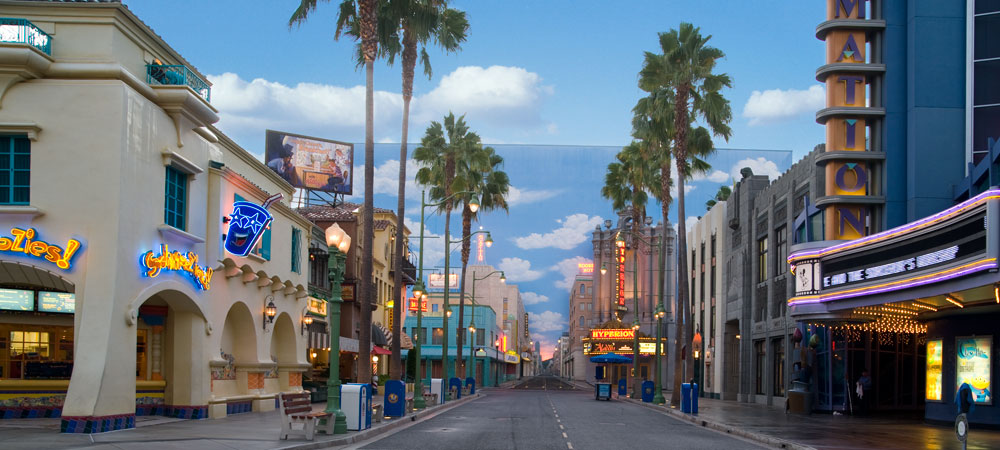
Nefarious as it may seem, back in 2001, at least part of California Adventure’s conceit was that by visiting Disney’s amalgamation of modern Californian sites, one could skip actually leaving the resort to see landmarks of the Golden State. So it was with Hollywood Pictures Backlot, which essentially offered, “Why go to the real Hollywood or a real movie studio when it’s pretty much this anyway, and in our version, cigar-smoking puppets can make you a star.” With flat facades, “Blue Sky” backdrops, modern allusions, and barren backlot plazas, it was cold, uninviting, and ugly.
Though on June 15, 2012 the land’s name changed to “Hollywood Land” (a curious and likely legally-distinct variant of the much more attractive and historic “Hollywoodland,” as the neighborhood’s fabled mountainside sign once read), it’s clear that changes here amounted mostly to placemaking. Exposed steel was hidden, backlot refuse was smoothed over, soundstages were brightened up, and modern allusions became historic signs and billboards.
But this is still the park’s weakest area in style and substance, especially since its anchor attraction (the Twilight Zone Tower of Terror) was ceded to the land next door (which it will be in my build-out, too, just not the same land).
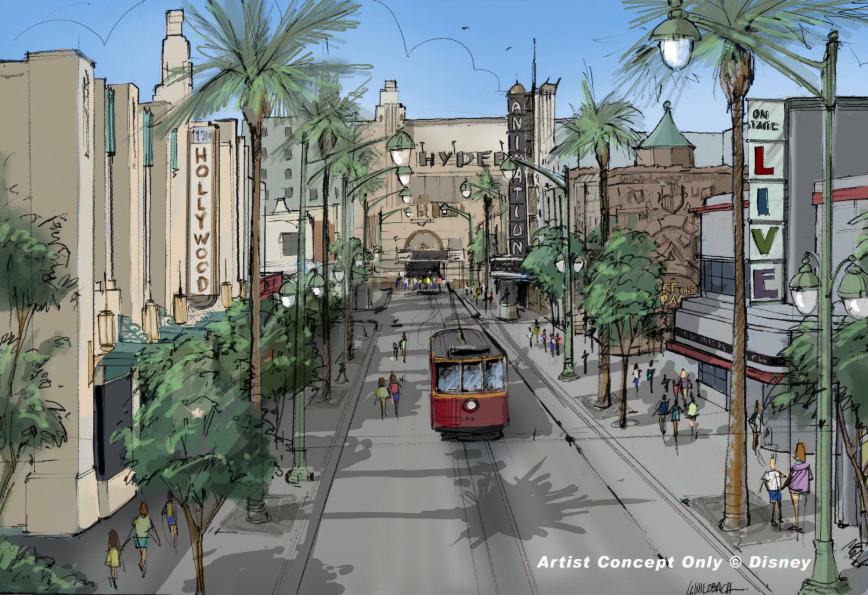
Obviously a land themed to Hollywood is a no-brainer in California Adventure, and the concept art Disney did release of a never-enacted “DCA 2.0” facelift for the land (above) shows how the land can be visually strong as well as distinct from Buena Vista Street. That makes the concept of a Hollywood land fun to play with.
But as the land’s current arrangement demonstrates, it’s also dangerous. Even if the very nice, historic, 1940s, Golden Age wrap that the concept art shows had been installed, what would it contain? Still Turtle Talk with Crush? A Monsters Inc. dark ride? A Frozen musical? The ultra-embarassing Mickey’s Philharmagic added as if it were a genuine new attraction in the year of our lord twenty nineteen?
How do you create a dynamic, historic Hollywood land, but salvage it from becoming an IP catch-all that maintains a sense of real time and place? Frankly, it might not be practical… But I tried my best to build a Hollywoodland (one word) with two distinct yet equally-immersive areas, each with a clear focus and substance for its attractions…
Build-Out
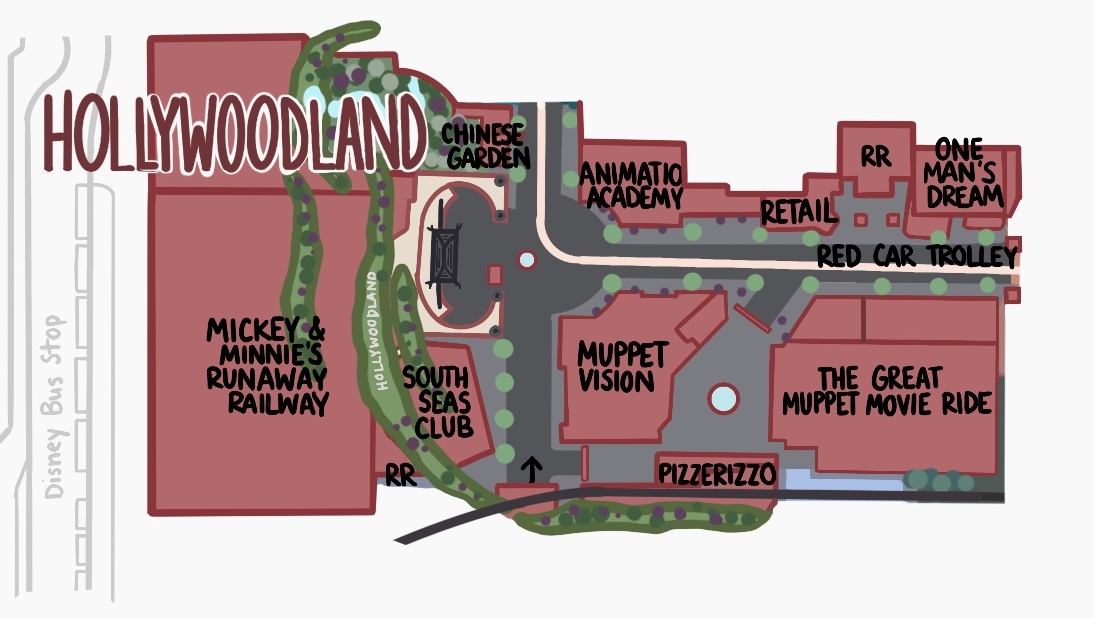
Let’s start with the streetscape. The timeless, historic Hollywood Blvd. at Disney’s Hollywood Studios is so fantastically effective and evocative as a theme park streetscape, it boggles my mind that Disney didn’t just recreate it from scratch at California Adventure to begin with instead of opting for the Backlot version. So in my ideal California Adventure, that switch would finally happen, aesthetically resetting this land to the 1940s and an idealized neon streetscape of pastel buildings and neon signs.
So now, gazing down Hollywood Blvd. from the Carthay, you’d see this…

A wonderful, historic streetscape of rooftop billboards, dancing neon, Red Car Trolleys, and – at the street’s end – the historic Chinese Theater with the Hollywood Hills beyond (which are actually layered, textured flats serving to disguise the showbuilding that the Chinese Theater facade connects to. (Enjoy my hasty photo-edit, above.) Using natural features to disguise showbuildings is a big win for Hollywoodland, in my opinion, which would benefit from any reduction in visible soundstages or “cop out” views.
Narratively, if Buena Vista Street represents Walt’s arrival, then Hollywoodland should represent his ascent. I think it’s fair to use Hollywoodland as the place where the park explores Walt’s legacy in animation, culminating in the ride inside the Chinese Theater… But we’ll get to that in a second. First, passing between the pillars that serve to separate Buena Vista Street from Hollywoodland, you’d come across…

ONE MAN’S DREAM – a version of the exhibit found at Disney’s Hollywood Studios that would celebrate Walt’s story from Snow White through Disneyland. This exhibit space would be accessible from Hollywood Blvd., but would also serve as the post-show of Buena Vista Street’s dark ride, picking up right where the ride left off and depositing guests in Hollywood, just as Walt himself was.
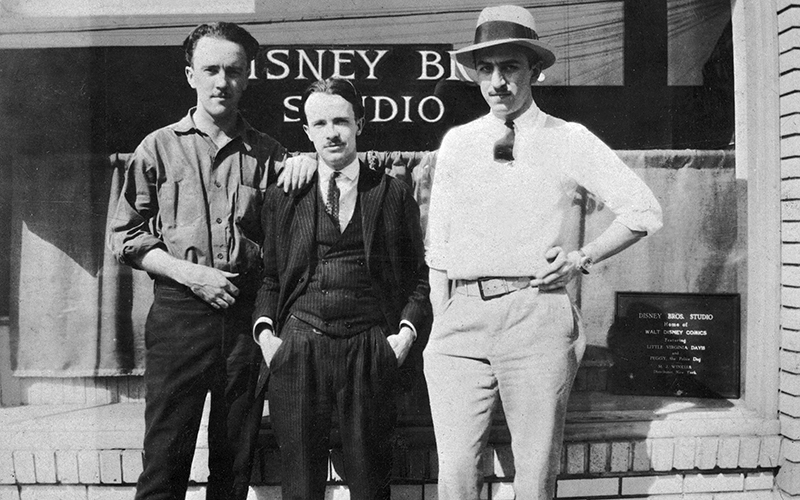
Further down the street, I preserved the ANIMATION ACADEMY portion of the current Animation building (the rest of that very, very large showbuilding will be re-used later…). I think it would be fun to restyle exterior as the Disney studio on Kingswell Ave., which was essentially a rented storefront that would appropriate here in this urban streetscape.
That very simple exterior could lead to a small “walkthrough” style queue, passing through a to-scale recreation of the Kingswell studio, then a holding area recalling the later Hyperion studio filled with animators tables, basically walking guests through the first decade of Disney Animation and then onward to a modern classroom for their own hand-drawn character class.



But the land’s true icon would of course be the iconic Chinese Theater (weirdly, another theater-at-the-end-of-a-Main-Street that’s clearly set up to be the park icon but isn’t, at Disney’s Hollywood Studios). That would serve as the entrance to the West Coast version of MICKEY & MINNIE’S RUNAWAY RAILWAY, which is a spectacularly fun ride and a fitting ode to Mickey’s cartoon origins. I added it here for a few reasons:
- California Adventure desperately needs more E-Tickets (which is why it’s absolutely, jaw-droppingly strange that a copy of Runaway Railway is instead being routed to Disneyland, which already has more E-Tickets than any other Disney Park)
- As proven by Hollywood Studios’ version, the Chinese Theater actually makes a really great end-of-the-street weenie, and the transition from an opulent theater into the cartoon world is a really compelling one. (Certainly, though, we’d still build a sizable and fun queue as you’ll find in the real world Disneyland version.)
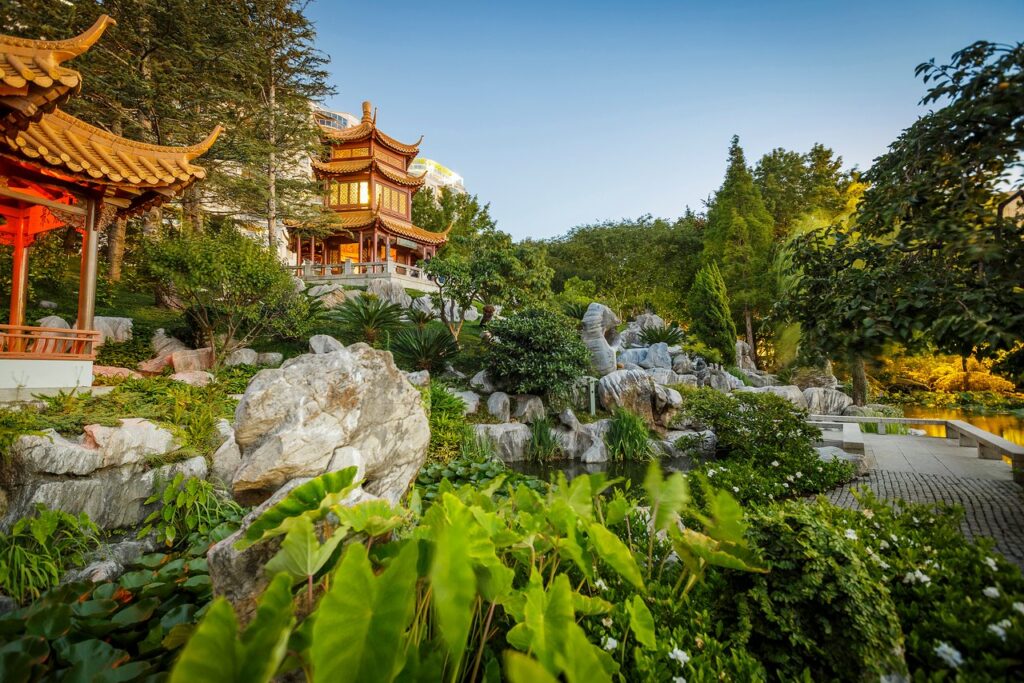
Adjacent to the theater and tucked into the false “Hollywood Hills” backdrop, I added a CHINESE GARDEN space (where the current “outdoor lobby” for the Hyperion is) to serve as an extended queue for Runaway Railway when needed and – otherwise – a nice, quiet, green, walled-in break from the urban sprawl of Hollywoodland, nestled into the “hills” (and thus, further serving to hide the showbuilding).
California Adventure needs more of these “hidden gems” and “secret spots,” where you just find a sweet little vignette or a waterfall or a cozy corner. Think of Disneyland’s wishing well, or Fantasy Faire; the babbling brooks of Critter Country, or the long-lost Court of Angels in New Orleans Square. I think adding a Chinese Garden to Hollywoodland would be a wonderful little find for people.

Meanwhile, on the opposite side of the Chinese Theater, I added a small, multi-story SOUTH SEAS CLUB from Disney’s 1991 film The Rocketeer.
It’s funny – The Rocketeer is a Disney film, set in California, around Hollywood, in the 1940s. There’s really not a better home-grown Disney IP for the park and this land than the Rocketeer, but of course, it’s merely a cult classic and not a viable modern franchise, which is why it’s never been seen in the Parks in any meaningful way. (As an unrepentant fan, I added an entire Rocketeer stunt show to my build-out of Disney’s Hollywood Studios!)
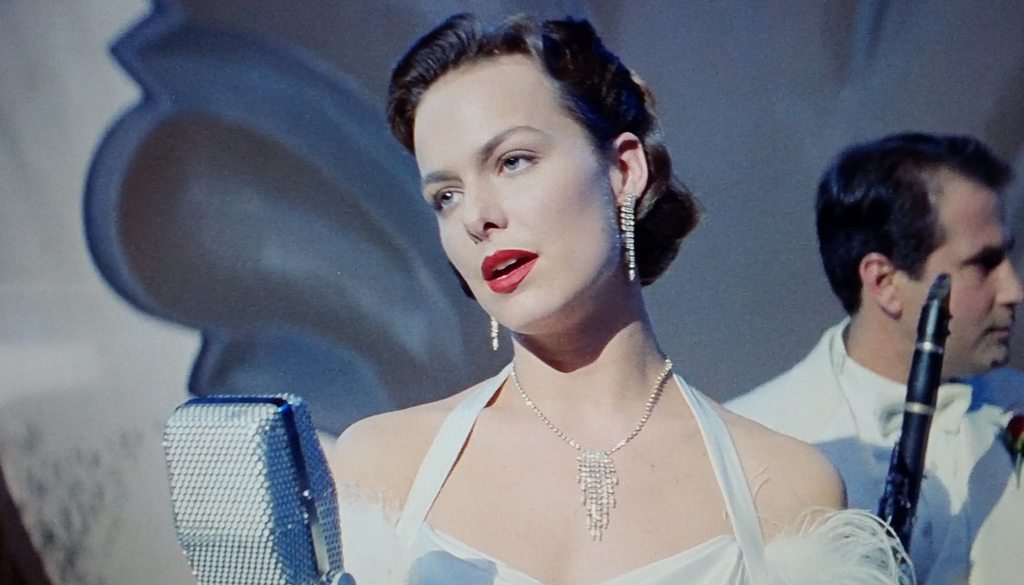

If you could properly establish a South Seas Club as a mix of the Golden Horseshoe Saloon and Hollywood Studios’ Catwalk Bar, I think you’d find this restaurant would actually transcend its IP tie-in anyway and become this park’s equivalent of Disneyland’s Tropical Hideaway – a sort of “Dole Whip & Chill” people sponge that passholders would just spend time hanging out in. Especially adding in live acts, or jazz bands… It’s really not so outrageous considering that Disneyland’s French Market Restaurant is often inhabited by jazz quartets. Why couldn’t a South Seas Club switch from quick service by day to table service at night, with a Catwalk Bar operating all day?
Altogether, that fills out Hollywood Blvd. and its cross street, which I think do a pretty good job of being a united front stylistically and substantially. Though attractions range from Walt to Mickey to the Rocketeer, it all sort of fits in the same timeline and style. I can’t say the same thing for what I did to the land’s awkward “backlot” plaza…

… but man, I just can’t apologize for turning this area into a full-fledged, red-brick Muppets Studios. If it makes you feel better, I guess you could split this plaza off of Hollywoodland and graduate it to full-fledged land status, but the Muppets lend themselves so well to a zany backlot of mayhem and madness, so even if it’s a major time jump to get there, I’m okay with this area – cordoned off from the rest of Hollywoodland – being its own thing.
Entering from Hollywood Blvd., I think you’d even get roughly the view above – of that iconic Miss Piggy fountain with the balcony seating of PIZZERIZZO beyond. (The restaurant’s kitchen and ordering area would occupy a new structure abutting the existing Monsters Inc. dark ride, whose soundstage you’ll see re-used in the next land…)
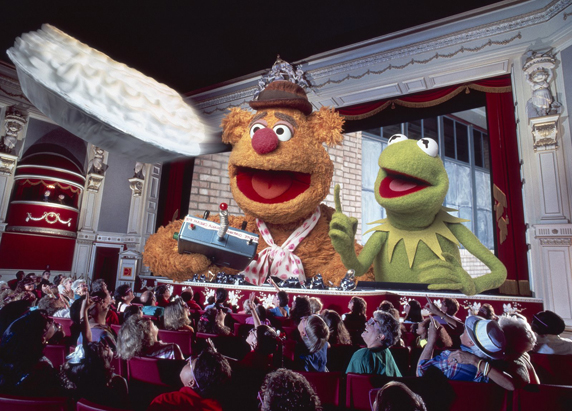
I’ve enclosed and expanded the backlot’s current open air auditorium (used for high school bands and traveling performances) to create a smaller and more intimate home for MUPPET*VISION 3D, which should honestly just play in perpetuity. This new Muppets Courtyard gives it a permanent home, and one sized more appropriately for a modern 3D show which, admittedly, is just never going to be a blockbuster draw.
That leaves vacant the land’s larger, existing 3D theater (again, built for Muppet*Vision, but currently showing Philharmagic) to be repurposed as dark ride space.
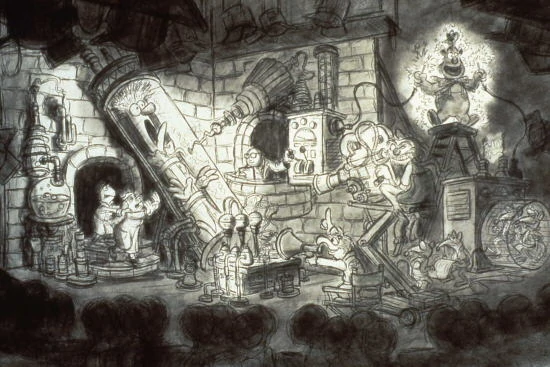
Naturally, there’s no better fit than THE GREAT MUPPET MOVIE RIDE – a dark ride once planned for the never-built Possibilityland: Muppet Studios expansion of Disney’s Hollywood Studios. A simple, family dark ride (which every park needs more of), this attraction tours guests past sets where the Muppets try (and inevitably fail hilariously) to recreate great scenes from cinema history.

So in some ways, I guess that makes Buena Vista Street and Hollywoodland the opening acts for this park – a one-two punch of idealized, romanticized, historic California locales… Maybe aside from the Muppets, there’s a great sense of “Walt-ness” to this duo. I’m happy with that. After all, I think these two lands offer a great foundation for the “DCA 2.0” ethos, and I hope these plans only strengthen that.
But I know what you’re thinking. So far, my dreamed-up, built-out California Adventure hasn’t diverged too much from the real thing. Let’s start to change that…



Is Nemo’s Seaskimmers another Aquatopia-styled ride?
Do you ever like to think (in a purely fictional and prideful world) that Disney potentially has some similar ideas to you and then says “oh darn, he used them in his rebuild” so they can’t use them?
For better or worse I don’t think I have a large enough following that anyone from WDI would ever even stumble across my stuff! Hahahah. But that isn’t to say it’s not a cool daydream that someone would say to themselves or to me, “This is great stuff stuff and I would love if we could make it real in the parks just as you’ve drawn it.” But again, I know I’m not actually a professional and that countless real world limitations would stop that from happening every single time! Haha
This is probably my favorite build out as a Disneyland regular. I love the call backs to unused lands like Discovery Bay and the addition of Mystic Manor. Pacific Point gives me a Northern California vibe like close to Oregon area. Can’t wait for your next build out!!
The thing about the 2012 redesign is that, while an idealized California appeals to out-of-towners, it also leans into DL’s identity as a local’s park by giving us places that we cannot visit in real life. I especially love the Carthay Circle restaurant and the Pan Pacific Auditorium gates, because they were torn down before I could ever see them.
Which is a long winded way of saying that the Figueroa tunnel does not belong in California Adventure, because I’ve driven there a hundred times. (To a lesser extent I’m not interested in putting the Chinese Theater in the park, because it’s still there, but I have to admit every time I’ve gone to the Chinese Theater I’ve had fun. Pasadena, however…)